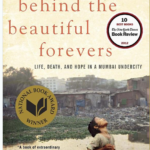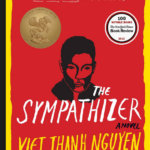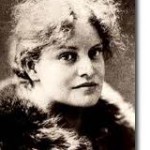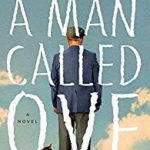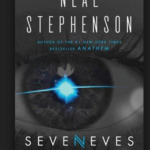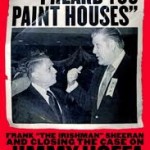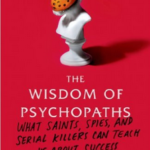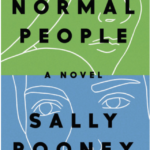Vienna Triangle by Brenda Webster
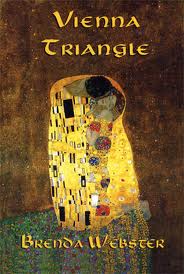 Vienna Triangle
Vienna Triangle by Brenda Webster – Published by Wings Press, San Antonio, Texas, 2009
I originally wrote this book review for Academy Forum which is published by the American Academy of Psychoanalysis and Dynamic Psychiatry. I also subsequently published it in my blog PsychiatryTalk.com accompanied by a Q&A with the author which is also included here .
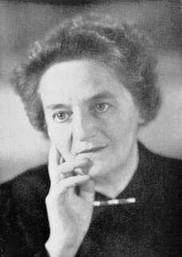 The year is 1968. Helene Deutsch is 84 and, while vacationing in Provincetown, Massachusetts, meets Kate, a young woman who, by coincidence, is writing her PhD thesis at Columbia University about the early women analysts. Dr. Deutsch is one of the most prominent, well-known and respected early women psychoanalysts and who had been in analysis with Sigmund Freud himself. One thing leads to another and in the course of their now mentoring relationship Kate uncovers some previously hidden documents belonging to her mother and which shed light on a family secret that her mother had withheld from her. This secret was that her maternal grandfather was the well-known psychoanalyst Victor Tausk who had been part of Freud’s inner circle and who had committed suicide.
The year is 1968. Helene Deutsch is 84 and, while vacationing in Provincetown, Massachusetts, meets Kate, a young woman who, by coincidence, is writing her PhD thesis at Columbia University about the early women analysts. Dr. Deutsch is one of the most prominent, well-known and respected early women psychoanalysts and who had been in analysis with Sigmund Freud himself. One thing leads to another and in the course of their now mentoring relationship Kate uncovers some previously hidden documents belonging to her mother and which shed light on a family secret that her mother had withheld from her. This secret was that her maternal grandfather was the well-known psychoanalyst Victor Tausk who had been part of Freud’s inner circle and who had committed suicide.
Kate becomes obsessed with trying to unearth the details of her grandfather’s life and to find out why he killed himself. Dr. Deutsch who knew Dr. Tausk and even briefly analyzed him, reflects on distant memories and begins to bring forth pieces of the puzzle. These details involve Tausk, Freud and the beautiful Lou Andreas-Salome. Kate also stumbles upon information that leads her to meet her two previously unknown uncles, sons of the late Dr. Tausk.
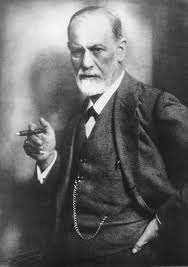 Author Brenda Webster uses this plot in her novel to explore and describe life in Vienna and the complicated interactions both inside and outside of Freud’s Inner Circle during the birth of psychoanalysis. The personalities of the cast of characters unfold. Freud the creator, the father figure, is portrayed as extremely protective of his newly developed “baby.” Tausk is described as a brilliant young man who is making important contributions to psychoanalysis but who feels he is not quite appreciated by the Master. He develops a love affair with Salome who at the same time has become one of Freud’s favorite pupils. Young Helene Deutsch is making her own contributions about psychoanalytic theory and women at the same time that she is having her own love affairs. Freud does not grant Tausk’s request to be analyzed by him and instead refers him for analysis to Deutsch. There is a question about whether Freud’s harsh and rejecting treatment of Tausk contributed to his decision to take his life. Documents that purport to show Freud’s reaction to his junior colleague’s suicide do not paint a flattering picture of the leader of the psychoanalytic movement.
Author Brenda Webster uses this plot in her novel to explore and describe life in Vienna and the complicated interactions both inside and outside of Freud’s Inner Circle during the birth of psychoanalysis. The personalities of the cast of characters unfold. Freud the creator, the father figure, is portrayed as extremely protective of his newly developed “baby.” Tausk is described as a brilliant young man who is making important contributions to psychoanalysis but who feels he is not quite appreciated by the Master. He develops a love affair with Salome who at the same time has become one of Freud’s favorite pupils. Young Helene Deutsch is making her own contributions about psychoanalytic theory and women at the same time that she is having her own love affairs. Freud does not grant Tausk’s request to be analyzed by him and instead refers him for analysis to Deutsch. There is a question about whether Freud’s harsh and rejecting treatment of Tausk contributed to his decision to take his life. Documents that purport to show Freud’s reaction to his junior colleague’s suicide do not paint a flattering picture of the leader of the psychoanalytic movement.
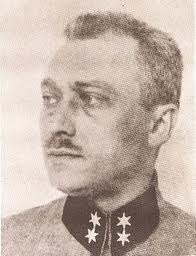 The characters in this book are interesting and well developed. There is love, romance, jealousy, rivalry, narcissism, loyalty, rejection, dedication to the cause, and the mysterious suicide of Tausk that contribute to making this a fine novel. It is a page-turner (or in my case a button pusher – I read books on the Kindle). This book should have strong appeal to all students of psychoanalytic and psychodynamic theory. It is well known that to fully grasp all of these ideas you need to go back to the streets of Vienna and the lives of the people who were bringing forth this revolutionary new understanding of human behavior.
The characters in this book are interesting and well developed. There is love, romance, jealousy, rivalry, narcissism, loyalty, rejection, dedication to the cause, and the mysterious suicide of Tausk that contribute to making this a fine novel. It is a page-turner (or in my case a button pusher – I read books on the Kindle). This book should have strong appeal to all students of psychoanalytic and psychodynamic theory. It is well known that to fully grasp all of these ideas you need to go back to the streets of Vienna and the lives of the people who were bringing forth this revolutionary new understanding of human behavior.
However there may be a problem with this book. It is a novel. It is fiction. If you are thinking of reading it to understand the intricacies and nuances of the relationships that existed in Freud’s inner circle, shouldn’t you really be in the non-fiction aisle of your library, bookstore, or frame of mind (if you are buying online).
Brenda Webster states the following in her authors note at the beginning of the book: “This is a work of fiction, not of history; nevertheless it is based on the lives and relationships of real people: Viktor Tausk, Sigmund Freud, Lou Andreas-Salome and Helene Deutsch. I have attempted not to violate the known facts, but have invented diaries, dialogs and secondary characters in order to bring the actors, their ideas and passions to full imaginative life.” This is an ambivalent statement. She says that it does not violate the known facts and yet all sorts of things have been invented.
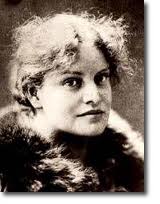 In the author’s afterword she further elaborates that an important letter mentioned in the book from Freud to Andreas-Salome after Tausk’s suicide is genuine, as are her responses to it. (This is one of the documents to which I referred to above.) Webster also cites Kurt Eissler’s writings that she says defended Freud’s treatment of Tausk. This suggests that she made efforts to found the main premise of the book on as much fact as possible.
In the author’s afterword she further elaborates that an important letter mentioned in the book from Freud to Andreas-Salome after Tausk’s suicide is genuine, as are her responses to it. (This is one of the documents to which I referred to above.) Webster also cites Kurt Eissler’s writings that she says defended Freud’s treatment of Tausk. This suggests that she made efforts to found the main premise of the book on as much fact as possible.
My advice to potential readers is as follows: If you have been around the block and studied the history of psychoanalysis to the point where you are satisfied with what you know, or if you don’t really care about who said what or who was jealous of whom etc., then consider reading this enjoyable and interesting novel. It is fun thinking about these people even if many of the facts, attributions and nuances may not be correct. However, if you are a new student of psychoanalytic theory and want to learn more about these historical figures and how they interacted while coming forth with these ideas, hold off reading this novel. I suggest instead, that you read some of the many historical accounts, biographies and diaries, which are available about this period of time and these important people. Ask your teachers and mentors for suggestions, in particular about areas of your interest. By the time the movie comes around of this intriguing plot, if they ever decide to make one, you will be ready for this version of the story.
The following is a Q&A with the author Ms. Brenda Webster
MB: What attracted your interest to these characters and the birth of the psychoanalytic movement?
BW: I had written two previous books of psychoanalytic criticism and a memoir chronicling my history in therapy and had no intention of doing more. Then one day I was reading about how the great Goethe sucked the life out of people close to him and used them for his own purposes. This made me think of Freud and Viktor Tausk. I wondered if genius couldn’t tolerate the existence of great talent in its vicinity and I was off and running.
MB: On one hand you emphasize in the author’s notes at the beginning of the book, that this is a work of fiction, not history, but on the other hand you note that you have attempted not to violate the known facts. Is the story your best guess as to what was the nature of the relationships which you wrote about or is it rather an attempt to write a fanciful interesting novel ?
BW: As I researched my story—and I read everything I could get my hands on from background material to biographies of Deutsch, Lou Salome, Tausk and Freud—I came to feel that Freud played an important role in Tausk’s suicide.and subsequent cover up. I had no impulse to write a polemical book. (My analyst Kurt Eissler had written two books defending Freud) I wanted to explore what happened, to re-create the people and the situations to decide for myself what motivated them. Fiction was from the beginning a way of gaining imaginative insight.
MB: In the story, you show Freud as using Tausk’s ideas without crediting him . As a writer yourself, do you view this as a particularly immoral act or do you believe that things like this can happen without malicious intent?
BW: I think that writers often borrow from each other but in the case of Freud and Tausk there was so much emotional freight behind the borrowing. Each man accusing the other of not giving credit that it took on a more sinister coloring.
MB: Can you picture this book as a movie and would you like to share your ideas as to which actors and actresses might best capture the spirit of your story ?
BW: Yes, I can picture it as a movie. The first thing the Freud scholar Paul Roazen said when he read my early draft was that it would make a terrific movie. I don’t keep up with contemporary actors but I think someone like Helen Bonam Carter would be good for Lou. Both sexy and super intellectual.
MB: Where will you be taking your readers in your next book?
BW: I am working on a play with a New York Producer/director that carries on my interest in Freud and his circle. So far it has been an exciting experience
Comment » | FH - Fiction Historical, MHP - Mental Health/Psychiatry

